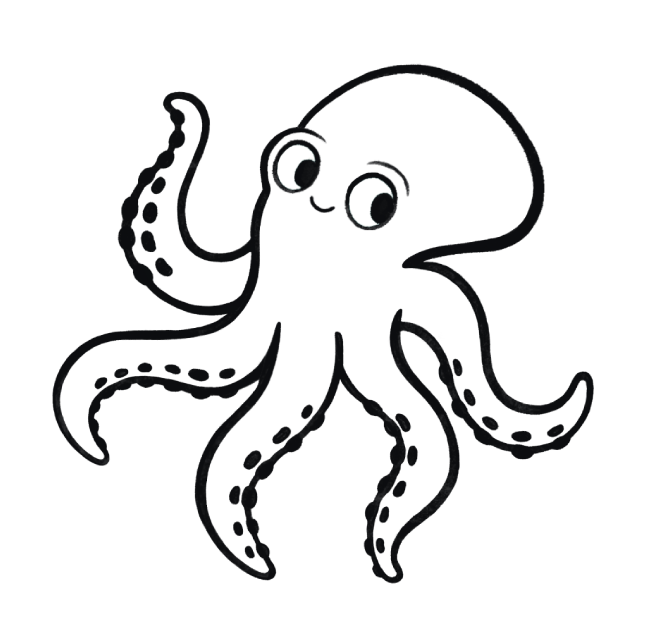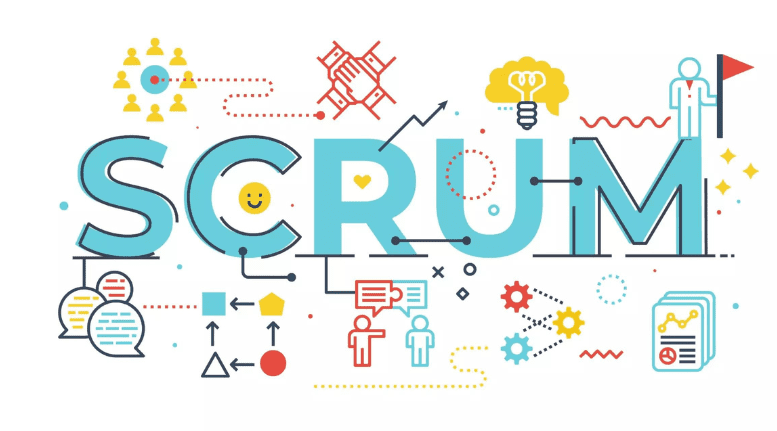, they give you a summary of what happened in previous ones? Well, we’re going to do something like that now with Agile methodologies.
To get a really good understanding of what they are, we recommend that you take a look at the post on what agile methodologies are. But if you don’t have time and would appreciate a summary, here it goes.
Agile methodologies are those that improve productivity and streamline workflows. And what else can they do for you, young Padawan? Well, something as valuable as helping you react better to unforeseen events in the project, while building up trust among the members of the different teams involved in the different phases of the project. And something very important: they allow for client or stakeholder participation throughout.
Scrum is one of those Agile methodologies. And now that we have reminded you of it, let’s get to the point.
What is Scrum and where does it come from?
This project management methodology was born in the world of software. In this field, as in engineering, it started out with product design and the characteristics that the client wanted as the end result were agreed and closed with the client before actually getting down to work. The method had so many advantages that it was quickly extrapolated to other professional fields.
Scrum is arguably at the top of the Hall of Fame of Agile methodologies. If you thought Olympic gymnasts were flexible, this baby manages to eliminate the rigidity of other working methods and allows changes to be made throughout the project without making a mess of the organisation. And, hey, if it also means you can react to unforeseen events and market movements that were not originally contemplated in the design, how could you not want it?
These aren’t the only advantages. Scrum also makes it possible to transfer some responsibilities that traditionally fell to middle management onto the technical staff. So their knowledge and experience are put to good use.
OK, so what is this Scrum methodology used for?
If your team has to manage product development or maintenance projects, Scrum will be your crush. Especially if it’s a complex product, thanks to its incremental development characteristics, the flexibility it allows and the possibility of involving stakeholders.
To understand how to use the Scrum methodology, the first thing you need is to understand the different phases of this way of working. Having an overview of the different roles it defines is a good help.
Scrum groups all your roles into teams. Football? No, don’t get distracted. We’re talking about a small group of people who take on all the roles defined by the method and who have all the skills needed to add value to the product being developed or maintained in each sprint.
In each what? A sprint, or in other words, a short period of time, usually just a few weeks, in which a team works together to complete a series of previously defined tasks. Each sprint usually ends with a series of deliverables that can be reviewed and iterated at the end of the sprint period.
What are these roles you’re talking about?
As time is short, as follows:
Developers: If the origin of the Scrum method was in software, it’s quite logical that it has inherited a certain terminology, as in fact is the case. And what do developers do in any other field outside the original one? Well, they are in charge of carrying out the work defined for each sprint.
Product Owner: The person in charge of defending the interests of the product that is being developed or maintained, and who ensures that the value of the product that is the object of the methodology is maximised. A kind of ombudsman, but applied to a work system.
Scrum master: The person in charge of ensuring that the methodology is applied correctly and that the different groups involved work as planned, in a coordinated manner and maximising the value of their work and contributions. The f… boss, in two words.
So it’s on to the phases
Isn’t this all about making work more agile? OK, without beating round the bush, here’s the idea:
1. Creating the product backlog. Before you ask what went wrong with our mouths, let us explain what a product backlog is: a list of all the requirements, at a high level, that a product has to meet. It is the product owner, with the help of the Scrum master, who is in charge of creating this list from the requirements obtained from the stakeholders. It is very important that the list of tasks is properly prioritised, so that the development team knows which are most relevant or should be completed first.
But be careful – this is a team effort. Although the product owner is the one who creates the list of tasks, he/she is not in charge of assigning them to the developers. In the Scrum method, they are the ones who take on jobs as they finish others. And how do they get organised? With the help of a panel, whiteboard or board where sticky notes are placed and moved as tasks are completed. And if you say sticky notes, you might just as well say LetsGoNotes, which is a more appropriate way of getting things done (and yes, we have come here to talk about our book).
2. Sprint planning: Once the tasks have been defined, it is important to define which ones are going to be carried out in each sprint. And to do this, you have to base it on priorities, on their difficulty and on the value they contribute to the product. This is the role of the sprint backlog, which works in the same way as the product backlog, except that it only contains the tasks that are going to be completed during a specific sprint. Now we’re back to using those cool and super-practical removable sticky notes called LetsGoNotes, more specifically the agile game version that can be moved from one panel to another without losing your fingernails in the attempt and without getting it all covered in glue.
3. Sprints: These are the heart of the methodology, the crux of the matter, the very essence of Scrum. They define the periods of time in which the previously planned tasks are completed.
4. Daily Scrum meeting: This is a short meeting – it shouldn’t last more than 15 minutes – that focuses on evaluating how the last sprint went and deciding the work plan for the next day. In this type of meeting, the status of the tasks and the problems encountered should be discussed. No talk about the weather, the children or how expensive life is. Straight to the point and no fuss. For other issues or if you need to go into technical details, it’s better to set up a separate meeting.
5. Sprint review: This consists of assessing the work that has been done, sharing the strengths and weaknesses detected in the process and defining or evaluating possible adaptations or improvements for the next sprint. This phase usually ends with the generation of a deliverable, or at least with a version of the product that can be presented to the stakeholders. They can then assess the work done and see whether any changes need to be made. And guess what is incredibly useful when it comes to making these analyses? That’s right, having stickers in different colours, so that the result is really visual and easy to understand at a glance. In other words, using LetsGoNotes.
What benefits does the Scrum methodology provide for my work?
All these:
• Flexibility: By working in sprints and focusing efforts on small tasks, releasing results incrementally, it’s possible to adapt to unforeseen events or incorporate changes or adaptations into a project without affecting the entire workflow.
• The possibility of involving stakeholders in all phases of the project: the incremental nature of the method allows stakeholders to be informed of every step taken or inconvenience encountered, involving them in the development of the project in all its phases, not only at the beginning.
• Highly productive and motivated teams: teams have a clear vision of where they are going. The project is not a load on their backs, but rather they pull the project towards them. They are also given enough confidence to plan and assess sprints, so they feel that their skills are valued and they are given autonomy and trust. And, hey, they trust you and tell you how great you are, and that will motivate you beyond belief…
• Better time estimates: breaking the project down into smaller tasks allows for better estimation of delivery times. These estimates improve further as incremental progress is made and similar tasks are completed.
• Obtaining a minimum viable project: incremental delivery facilitates obtaining a project with the minimum characteristics to be viable before a complete product is available.
But just like with everything else, there are some buts: the disadvantages of using Scrum
Not everything is perfect in this life. The Scrum methodology also has some drawbacks:
• It needs small teams.
• It needs an exhaustive definition of tasks, together with priorities.
• It needs teams that have all the necessary skills to add value to the product. This often implies the need for senior profiles in each team.
• It might need organisational changes.
What tools does Scrum have?
If you are thinking of hammers, spanners and screwdrivers, you can forget about that right now. Scrum tools are elements that empower the management we have previously defined. Each tool is designed to provide information for the team and allow them to have a clear vision of what they want to achieve. All this enables the whole team to take decisions based on the same knowledge.
Each tool is associated with a commitment that allows us to transparently show what we want to achieve or what has been achieved.
These are the most common tools:
Product Backlog
The product backlog is the list containing all the tasks to be performed in the project. The commitment is the product target which should clearly show where you want to get to.
Sprint backlog
The sprint backlog is the equivalent of the product backlog for each sprint. The commitment is to show the final goal of each sprint.
Increment
The increment defines a specific milestone that should be achieved before the product target can be reached. The commitment is the definition of completeness. Each milestone formally defines what it means to have completed it, so it is easy for the team to identify milestones achieved as the project progresses.
Examples of the use of the Scrum methodology
Yes, we know, this is all very well, but as everything runs the risk of remaining abstract, it’s better to find some specific examples of the application of Scrum. And even at the risk of coming up with a spoiler, we can tell you that there are indeed companies that have put this methodology into practice and have become famous for it.
Here’s the first example: Intel. This company applies the Scrum method in the development of its microprocessors. It manages to reduce product development times by up to 66%.
Spotify is another major company that divides its workers into squads, small teams led by a Scrum master. The teams work according to this Agile methodology.
And one last example: Apple, which has also been noted for using Scrum since its beginnings to manage its projects.
Now that we’ve reached this point, give me a summary by way of conclusion
Your wish is my command, Master Luke.
Even though its roots lie in software projects, Scrum is a good candidate for organising any kind of project in other business domains.
This Agile methodology uses boards, sticky notes, short meetings and other tools to organise work in sprints. This allows for flexibility in the development and maintenance of complex products, and is more responsive to changing market needs.







